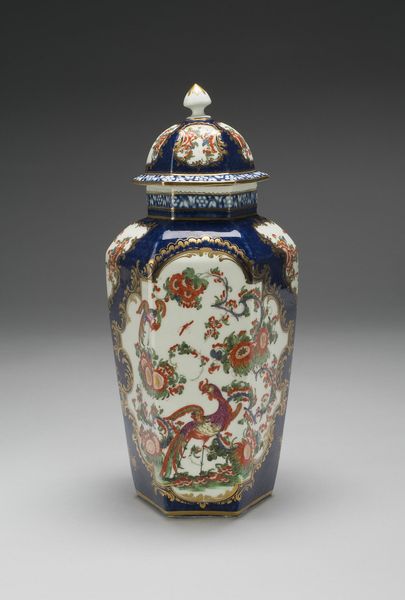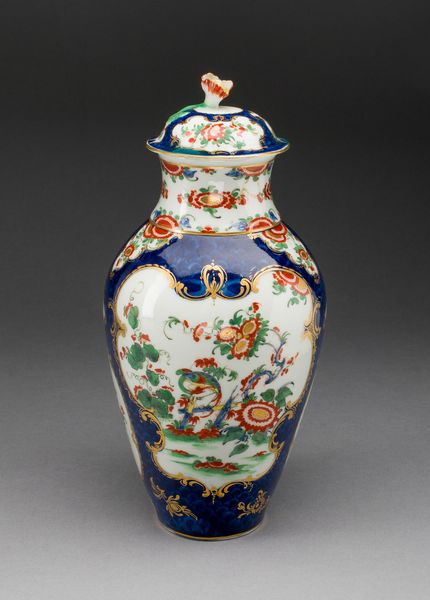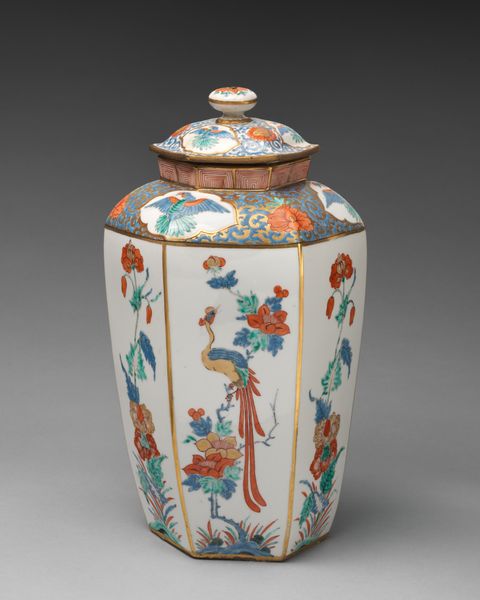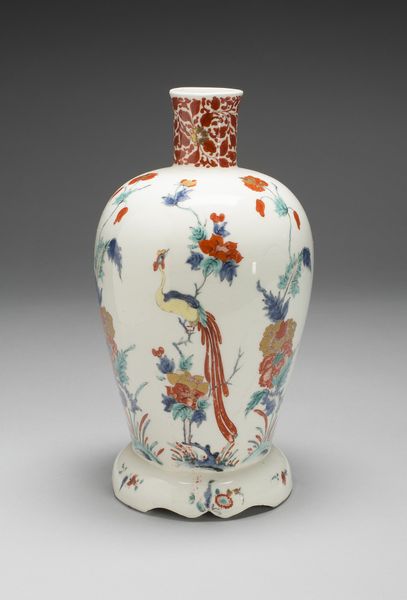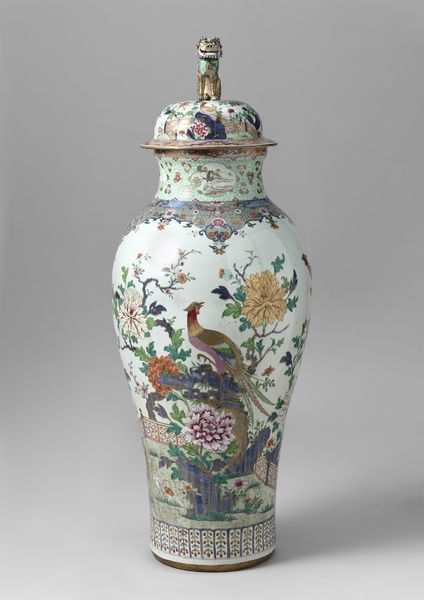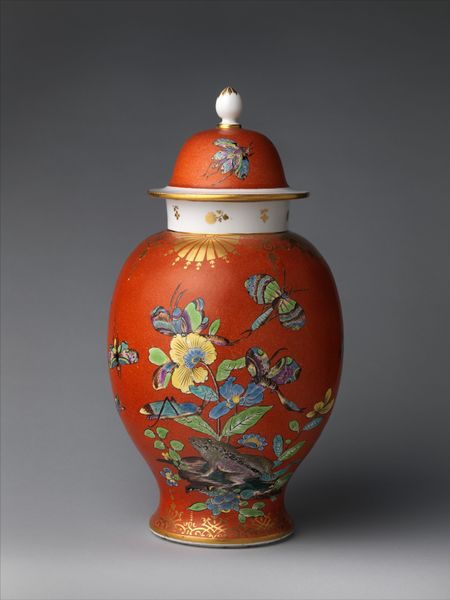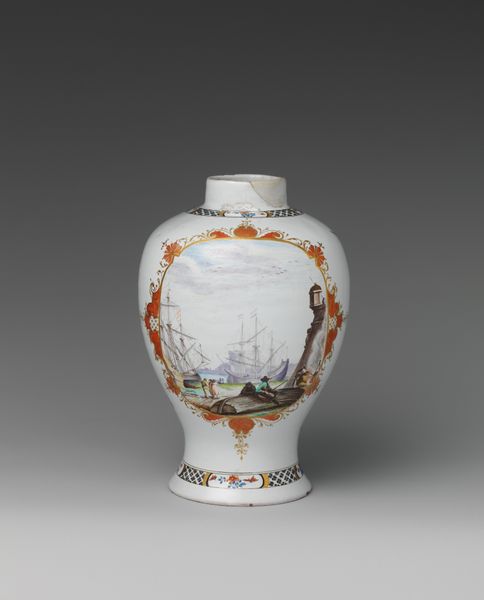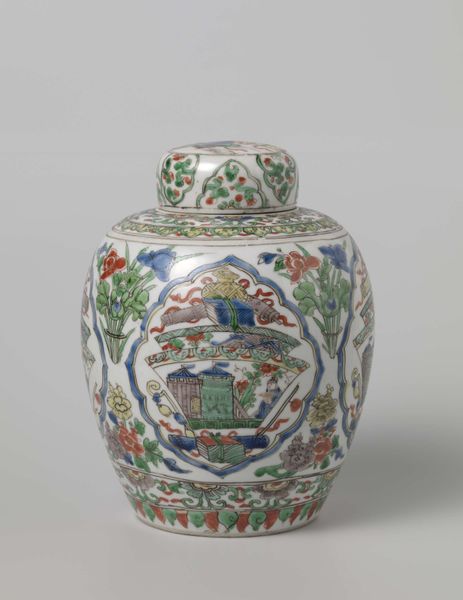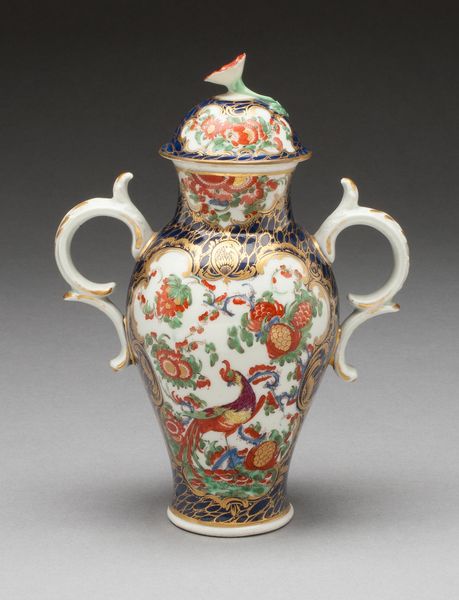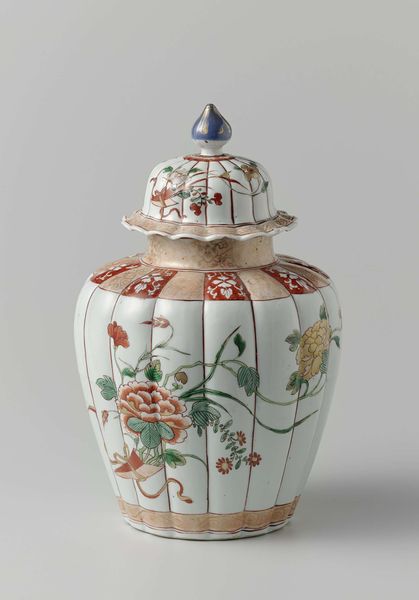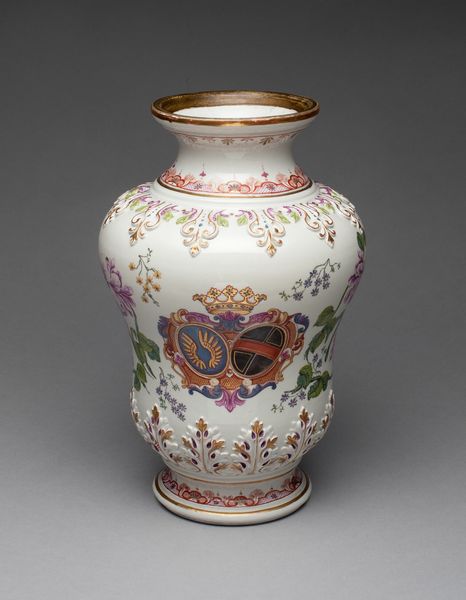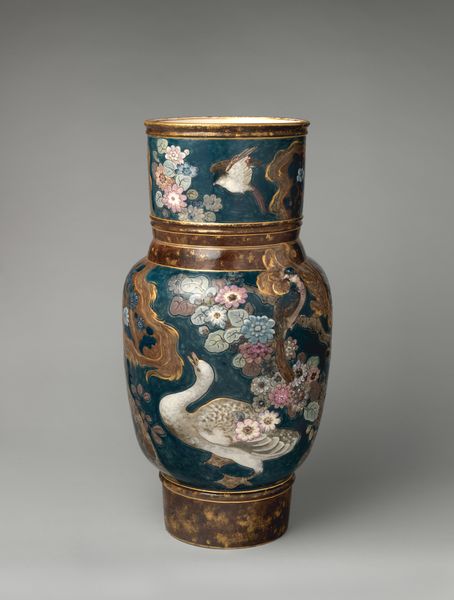
Vase with Cover (one of a pair) c. 1770
0:00
0:00
ceramic, porcelain
#
ceramic
#
vase
#
porcelain
#
ceramic
#
decorative-art
#
rococo
Dimensions: H. 29.2 cm (11 1/2 in.)
Copyright: Public Domain
Editor: This is a ceramic vase with a cover, one of a pair, made around 1770 by the Worcester Royal Porcelain Company. The rococo style is quite striking, but there's also an intriguing formality to its shape. The colors and patterns seem a bit…loud. What historical contexts might illuminate our understanding of it? Curator: Indeed, its flamboyant Rococo design clashes somewhat with the formality of its intended setting. Consider the vase within the historical context of British colonialism and trade. These objects, adorned with fantastical birds and lush foliage, reflect a fascination with the ‘exotic’ East – but what is "exoticism" if not a power dynamic? These objects become symbolic trophies that tell us a lot about the collector's values. Does the vase suggest ideas about social standing to you? Editor: Absolutely! The expense of such intricate porcelain, I imagine, would restrict its ownership to a very specific social class, acting almost like a signifier of wealth and “good taste”. Curator: Precisely. Think about the craftsmanship involved, too. Someone’s labour was consumed to make that, and was subsequently being consumed as pure decor. Where did the materials originate? What were the conditions of the artisans that produced them, in Worcester, or elsewhere? Also, consider the transfer of imagery: do these birds actually represent their natural counterparts in Asia or the West? How do they function as symbols, loaded with political ideology? Editor: So, while it might appear purely decorative, it really encapsulates the societal and colonial narratives of the time. The production, the aesthetic, even the display—all connected to power and privilege. Curator: Exactly. And by asking these questions, we are really asking questions about art history as well. What we deem decorative or "fine art", is really revealing about the hierarchy of whose stories and skills get visibility, and why. Editor: It definitely provides a different lens to view these seemingly innocent artifacts, and makes you consider whose stories are being told – and whose are being omitted. Curator: Precisely, seeing beyond mere aesthetics, to recognize these cultural signifiers, is essential in activist art history.
Comments
No comments
Be the first to comment and join the conversation on the ultimate creative platform.
